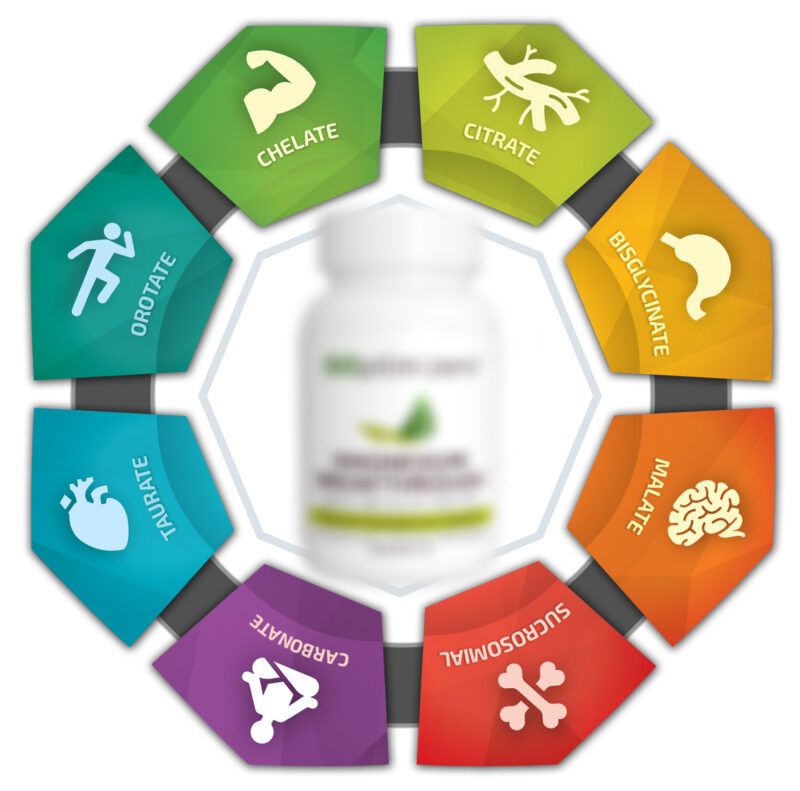 Child Asthma Natural Treatment: Effective Home Strategies for Managing Asthma Naturally
Child Asthma Natural Treatment: Effective Home Strategies for Managing Asthma Naturally
Asthma is a chronic condition that affects millions of children worldwide. According to the World Health Organization, over 339 million people globally suffer from asthma, with a significant portion of this population being children. Managing childhood asthma can be challenging, especially for parents seeking natural alternatives to complement conventional treatments. This article explores compelling and valuable natural therapies for managing child asthma at home, focusing on breathing exercises, dietary adjustments, herbal remedies, and allergen management. We’ll also highlight the benefits of using magnesium supplements, such as Magnesium Breakthrough, to support children with asthma.
1. Breathing Exercises and Techniques
Breathing exercises are among the most effective natural treatments for managing asthma symptoms. Studies show that children who practice breathing techniques, such as the Buteyko method and diaphragmatic breathing, experience fewer asthma attacks and improved lung function. These exercises help to control the breath, reduce hyperventilation, and promote relaxation. The Buteyko method, which focuses on nasal breathing and breath control, can significantly decrease the frequency and severity of asthma symptoms. Research suggests that these techniques can reduce medication use by up to 50%, making them a valuable addition to any asthma management plan.
By teaching your child simple breathing techniques, you empower them with tools to manage their asthma in real time. Diaphragmatic breathing, which involves deep breathing from the diaphragm rather than shallow chest breathing, helps relax the body and increase oxygen flow, reducing the tightness in the chest that often accompanies asthma attacks. Incorporating these exercises into your child’s daily routine can lead to long-term improvements in asthma control.
2. Healthy Diet and Anti-Inflammatory Foods
A healthy diet plays a crucial role in managing asthma symptoms. Foods rich in antioxidants, omega-3 fatty acids, and vitamins C and E can help reduce airway inflammation, a key factor in asthma. Studies indicate that children who consume diets high in fruits, vegetables, and whole grains have better lung function when compared to those who eat a typical Western diet high in processed foods and sugars. Omega-3 fatty acids, found in foods like salmon, chia seeds, and walnuts, have anti-inflammatory properties that can help calm the airways and reduce asthma symptoms.
Incorporating antioxidant-rich foods such as berries, leafy greens, and nuts can protect the lungs from oxidative stress, which can worsen asthma. Vitamin D, found in foods like fortified milk and eggs, also plays a role in immune function and has been linked to improved asthma control. Encouraging your child to eat a balanced, nutrient-dense diet can boost their overall health and help keep asthma symptoms at bay.
3. Herbal Remedies and Supplements

Herbal remedies and supplements offer natural support for asthma management. Ginger and turmeric are renowned for their anti-inflammatory properties and can be beneficial in reducing airway inflammation. A study published in the Journal of Ethnopharmacology found that ginger compounds helped relax airway muscles, potentially making it easier for those with asthma to breathe. Similarly, turmeric, rich in curcumin, acts as a powerful antioxidant that can reduce lung inflammation when consumed regularly.
Magnesium, a mineral known for its muscle-relaxing properties, can also help manage asthma symptoms. Studies show that magnesium can help dilate the bronchial tubes and make it easier for children to breathe during an asthma attack. It’s important to consult with a healthcare provider before introducing new supplements to your child’s routine, especially to ensure they are safe and effective for asthma management.
4. Essential Oils and Aromatherapy
Aromatherapy, using essential oils like eucalyptus, peppermint, and lavender, can be an effective natural remedy for asthma. Eucalyptus oil, known for its anti-inflammatory and decongestant properties, can help open airways and improve breathing. A study from BMC Complementary Medicine and Therapies showed that inhaling eucalyptus oil helped reduce the severity of asthma symptoms in children. Peppermint oil, with its menthol content, also acts as a natural decongestant and can soothe the respiratory system.
📢However, it is crucial to use essential oils with caution. Some children may be sensitive or allergic to specific oils, which could trigger asthma symptoms instead of alleviating them. Always use oils in a well-ventilated area, never apply them directly to the skin without dilution, and consult a healthcare provider to ensure they are appropriate for your child’s condition.
5. Environmental Control and Allergen Management

Controlling your child’s environment is one of the most effective ways to reduce asthma triggers. Common allergens such as dust mites, pet dander, mold, and pollen can exacerbate asthma symptoms, making it essential to keep your home as allergen-free as possible. Regular cleaning, using hypoallergenic bedding, and employing air purifiers can help create a safer space for your child. According to the American College of Allergy, Asthma, and Immunology, reducing allergen exposure can lead to significant improvements in asthma control, potentially reducing the need for medication.
Maintaining proper humidity levels in your home is also critical. High humidity can promote the growth of mold and dust mites, both of which can trigger asthma symptoms. A dehumidifier can help regulate moisture levels, especially in areas like basements and bathrooms where mold growth is common.
6. Hydration and Steam Therapy
Proper hydration is essential for maintaining optimal lung function. Water helps thin mucus in the airways, making it easier for your child to breathe. Encouraging your child to drink plenty of water daily can help keep their respiratory system in top condition. Steam therapy, such as inhaling steam from a warm shower, can also help soothe the airways and alleviate congestion.
Using a humidifier in your child’s room can provide moisture to the air, which may help ease breathing, especially during cold weather when indoor air tends to be dry. However, keep the equipment clean to prevent mold buildup, which could worsen asthma symptoms.
7. Physical Activity and Outdoor Play

Physical activity is an important component of asthma management. Regular exercise helps strengthen the lungs and improve overall respiratory health. Activities like swimming, build lung capacity without exposing the child to pollen. Yoga incorporates breathing techniques and is an excellent option for children with asthma. A study published in the National Library of Medicine found that children who engaged in regular exercise had improved lung function and fewer asthma attacks when compared to children who led sedentary lifestyles.
📢When engaging in outdoor play, it is essential to monitor air quality and avoid high-pollen days that could trigger asthma symptoms. With the right precautions, exercise can be a powerful tool in managing childhood asthma naturally.
8. Acupuncture and Alternative Therapies
Acupuncture, an ancient Chinese therapy, involves inserting thin needles into specific points on the body to balance energy flow and enhance overall health. Studies suggest that acupuncture may help reduce asthma symptoms by regulating immune responses and reducing airway inflammation. While more research is needed, some families report significant improvements in their children’s asthma control with regular acupuncture sessions.
📢Alternative therapies, when used alongside traditional treatments, can offer a holistic approach to managing asthma. However, it’s important to consult with healthcare professionals to ensure these therapies are safe and suitable for your child.
Magnesium Breakthrough for Children with Asthma

Magnesium Breakthrough is an advanced magnesium supplement that offers unique benefits for children with asthma. Magnesium is known to relax bronchial muscles, reduce airway resistance, and improve overall lung function, making it a valuable addition to asthma management. According to research, magnesium supplementation has been shown to improve peak flow rates and reduce the severity of asthma attacks, particularly in children who suffer from moderate to severe asthma.
1. How Magnesium Helps in Asthma Management
Magnesium works by relaxing the smooth muscles around the airways, making it easier for children to breathe. This muscle relaxation reduces bronchoconstriction, a common feature of asthma that restricts airflow and triggers symptoms. By incorporating Magnesium Breakthrough into your child’s daily routine, you may notice a reduction in wheezing and an overall improvement in their breathing capacity.
2. The Unique Benefits of Magnesium Breakthrough
Unlike traditional magnesium supplements, Magnesium Breakthrough combines seven different types of magnesium, each targeting a specific area of health. This full-spectrum approach not only supports lung function but also enhances energy production, reduces stress, and supports overall immune health. The carefully crafted formula ensures maximum absorption, delivering magnesium directly to the cells where it’s needed most.
3. Enhancing Asthma Control Naturally
Magnesium Breakthrough’s benefits extend beyond respiratory health. The calming effects of magnesium help reduce anxiety, which is often a trigger for asthma attacks. A calm, well-nourished nervous system can make a significant difference in managing asthma symptoms. Parents who have introduced Magnesium Breakthrough supplement to their children’s routine have reported fewer asthma-related disruptions and a better quality of life.

4. Safe and Effective Supplementation
Magnesium Breakthrough is designed to be safe and effective, making it an ideal choice for children with asthma. It’s crucial to consult a healthcare provider before starting any new supplement, especially to determine the appropriate dosage for children. With proper guidance, Magnesium Breakthrough can become an essential part of your child’s asthma management plan.
Conclusion
Managing childhood asthma naturally requires a comprehensive approach that includes breathing exercises, dietary adjustments, allergen control, and supplements like Magnesium Breakthrough. By exploring these natural treatments, parents can empower their children with tools to manage asthma effectively and improve their overall quality of life. Always consult with healthcare professionals to ensure the safety and effectiveness of any new treatments. With the right strategies, children with asthma can thrive and enjoy healthier, happier lives.
References:
- https://www.medicinenet.com/
- https://www.webmd.com/
- https://allergyasthmanetwork.org/
- https://www.mayoclinic.org/
- https://www.healthline.com/
Learn more:
- https://wellnesswealthconnect.com/natural-treatment-asthma-attack/
- https://wellnesswealthconnect.com/bronchial-asthma-natural-treatment/
- https://wellnesswealthconnect.com/free-buteyko-breathing-exercises/
- https://wellnesswealthconnect.com/yoga-breathing-exercises-anxiety/
- https://wellnesswealthconnect.com/are-benefits-acupuncture-treatment/
- https://wellnesswealthconnect.com/debunking-myths-about-acupuncture/
- https://wellnesswealthconnect.com/easy-healthy-meal-plan-for-a-week/

